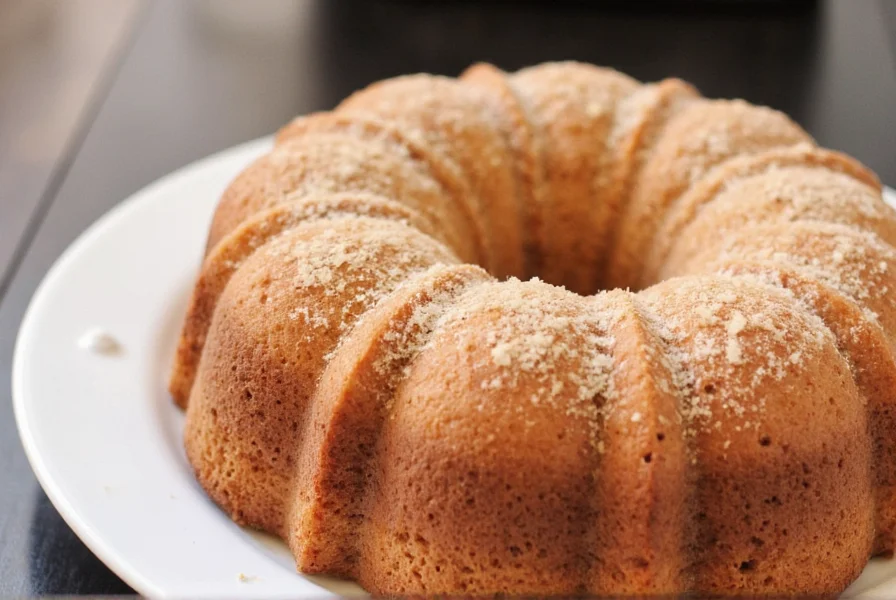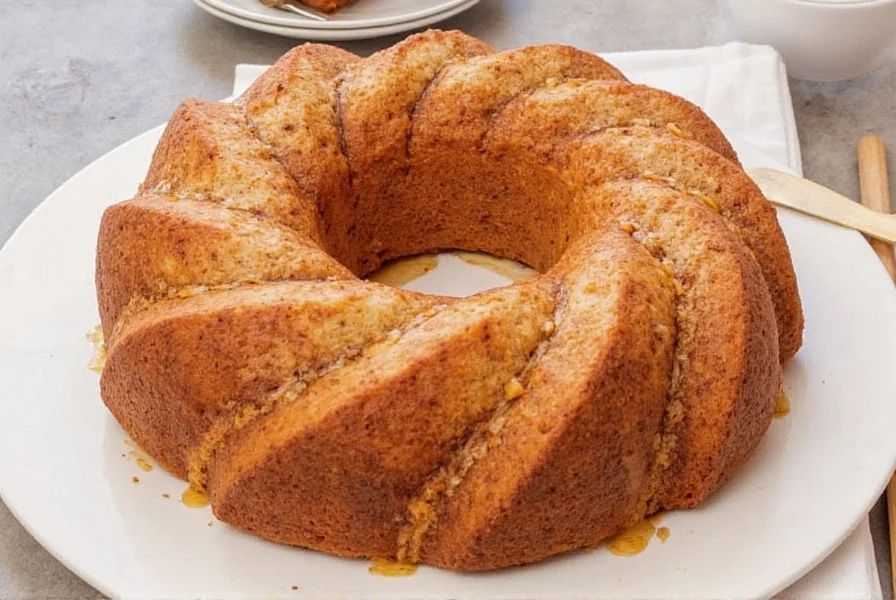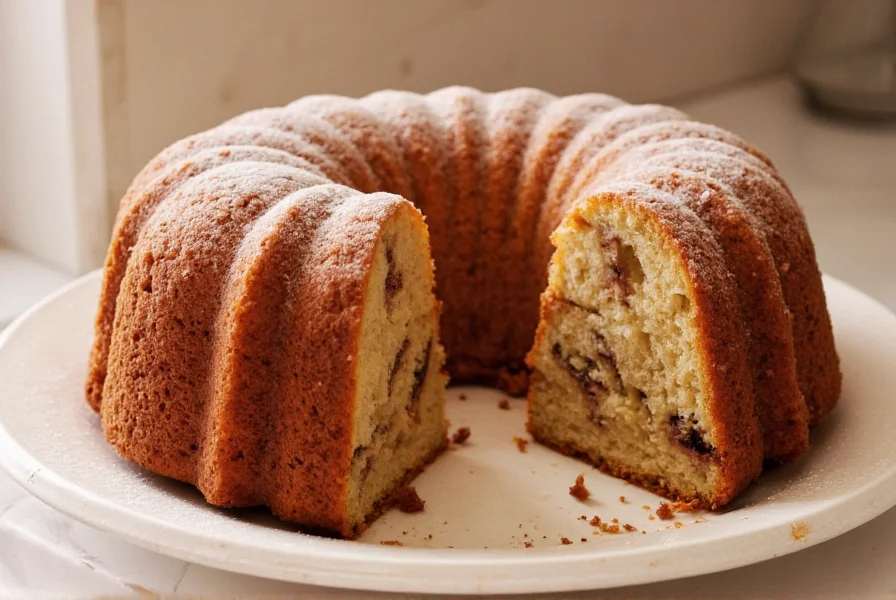For baking enthusiasts seeking the perfect homemade cinnamon babka cake, understanding the delicate balance between dough hydration, yeast activity, and filling distribution is essential. This traditional Eastern European dessert has evolved from its humble bakery origins to become a beloved weekend baking project for home cooks worldwide.
The Origins of Cinnamon Babka Cake
Babka emerged from Jewish communities in Poland during the 19th century as an affordable alternative to challah. The name "babka" means "grandmother" in Polish, possibly referring to the cake's twisted shape resembling a grandmother's braided hair. Originally made with leftover challah dough, babka transformed into its own distinct pastry with the addition of chocolate or cinnamon fillings.
Essential Components of Authentic Cinnamon Babka
Creating an exceptional cinnamon babka cake requires attention to three critical elements: the enriched yeast dough, the cinnamon-sugar-butter filling, and the finishing glaze. The dough must have sufficient strength to support the filling while remaining tender after baking. Professional bakers emphasize that the butter in both dough and filling should be at precise room temperature—soft but not melted—to ensure proper layering during the swirling process.
Step-by-Step Cinnamon Babka Cake Preparation
Mastering the authentic cinnamon babka cake recipe begins with proper dough development. After mixing and kneading your enriched dough to windowpane stage, allow for a complete first rise until doubled in size. Roll the chilled dough into a large rectangle, then evenly spread the cinnamon filling, leaving a small border along one long edge.

The signature swirl technique makes or breaks your babka. Starting from the filled edge, tightly roll the dough into a log, then cut it lengthwise to reveal the spiral pattern. Braid the two halves together before placing in your loaf pan. This method creates the beautiful marbled interior that defines traditional babka.
Optimal Baking Conditions for Perfect Results
Temperature control proves crucial when baking babka cake from scratch. Preheat your oven to 350°F (175°C) with convection disabled for even heat distribution. Bake for 35-40 minutes until the internal temperature reaches 190°F (88°C). An egg wash applied before baking creates the characteristic shiny crust, while a simple syrup glaze brushed on immediately after baking locks in moisture.
| Baking Stage | Temperature | Time | Visual Cues |
|---|---|---|---|
| Dough Proofing | 75-80°F (24-27°C) | 1.5-2 hours | Doubled in size, springs back slowly |
| Final Proof | 80-85°F (27-29°C) | 45-60 minutes | Rises 1 inch above pan rim |
| Baking | 350°F (175°C) | 35-40 minutes | 190°F internal temp, golden brown |
Common Cinnamon Babka Cake Troubleshooting
Many home bakers encounter issues with their babka cake baking attempts. If your swirls disappear, the filling was likely too liquid or the dough too warm. For dense texture, check yeast activity and avoid over-kneading. When the bottom crust becomes soggy, your pan material may be conducting too much heat—try doubling pans or adjusting rack position. The best cinnamon swirl babka technique requires chilled dough and properly tempered butter for clean layering.
Serving and Storage Recommendations
While babka tastes best fresh from the oven, proper storage maintains quality for up to five days. Cool completely before wrapping tightly in plastic film, then store at room temperature. For longer preservation, freeze sliced babka between parchment paper in an airtight container. Thaw at room temperature for 30 minutes before serving. Traditional Polish Jewish babka cake pairs beautifully with coffee or tea, with the rich cinnamon notes complementing bitter beverages.

Variations on the Classic Recipe
While the traditional cinnamon babka cake remains popular, creative adaptations include adding chopped nuts to the filling, incorporating orange zest for brightness, or creating a chocolate-cinnamon swirl combination. Some modern interpretations use sourdough starter for enhanced flavor complexity. When experimenting with babka cake variations, maintain the proper dough-to-filling ratio to prevent structural issues during baking.
Frequently Asked Questions
What's the difference between babka and regular cinnamon roll?
Babka features a higher ratio of dough to filling compared to cinnamon rolls, with the filling layered throughout rather than concentrated on top. The dough composition differs significantly—babka uses a richer, more challah-like dough with eggs and butter, while cinnamon rolls typically use a simpler, sweeter yeast dough. The braiding technique creates babka's distinctive marbled interior, whereas cinnamon rolls maintain a spiral pattern from rolling.
Why does my babka collapse after baking?
Collapse typically occurs from underbaking or improper cooling. The babka cake structure needs sufficient time to set—remove from oven when internal temperature reaches 190°F (88°C). Immediately transfer to a wire rack; leaving in the hot pan causes continued cooking and moisture buildup that weakens the structure. Ensure proper yeast measurement too—excess yeast creates too much lift that collapses during cooling.
Can I make babka cake without a stand mixer?
Absolutely. While a stand mixer simplifies dough development for babka cake from scratch, skilled hand kneading works equally well. The enriched dough requires 15-20 minutes of vigorous kneading to develop sufficient gluten. Look for the windowpane test—when stretched thin, the dough should transmit light without tearing. Properly developed dough provides the necessary structure to support the cinnamon filling during the swirling process.
How do I achieve the perfect shiny finish on babka?
The professional babka cake shine comes from two elements: an egg wash before baking and simple syrup after baking. Whisk one egg with 1 tablespoon water and brush evenly over the shaped dough before baking. Immediately after removing from oven, brush with equal parts sugar and water boiled to a syrup. This dual approach creates the signature glossy finish of authentic babka while enhancing moisture retention.











 浙公网安备
33010002000092号
浙公网安备
33010002000092号 浙B2-20120091-4
浙B2-20120091-4